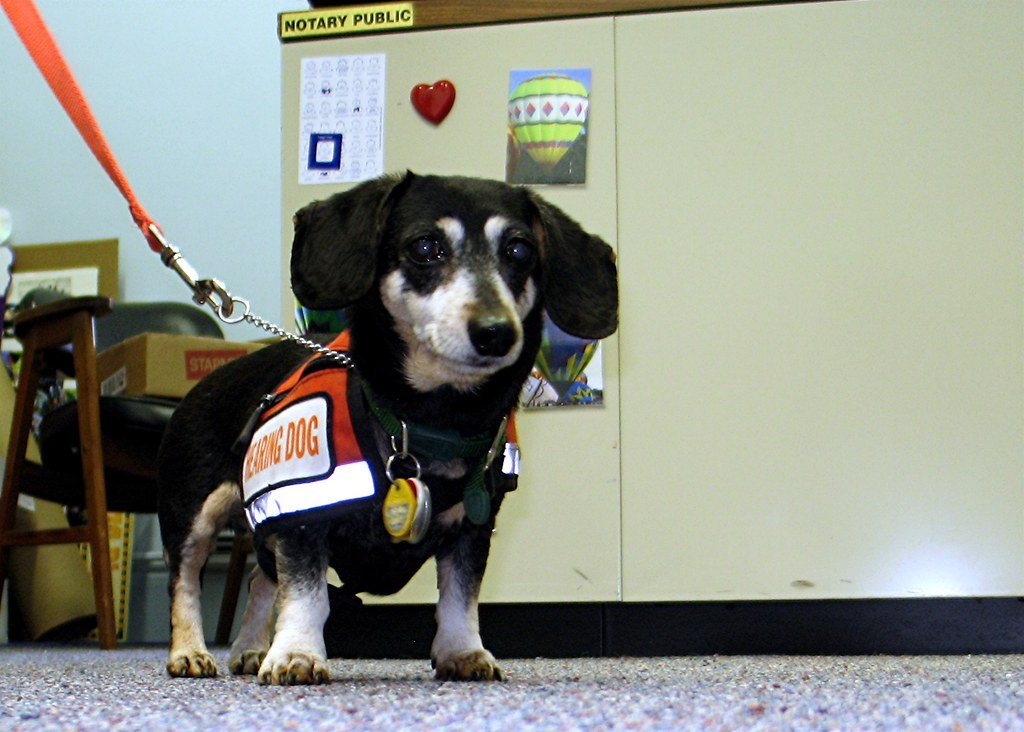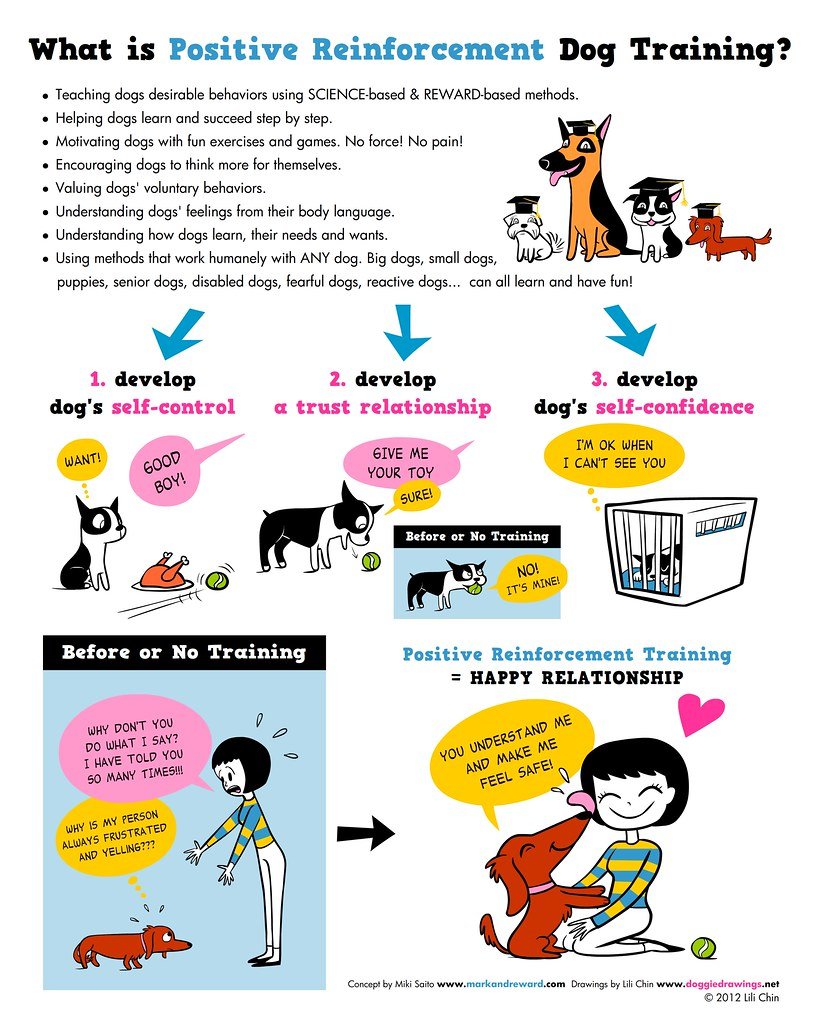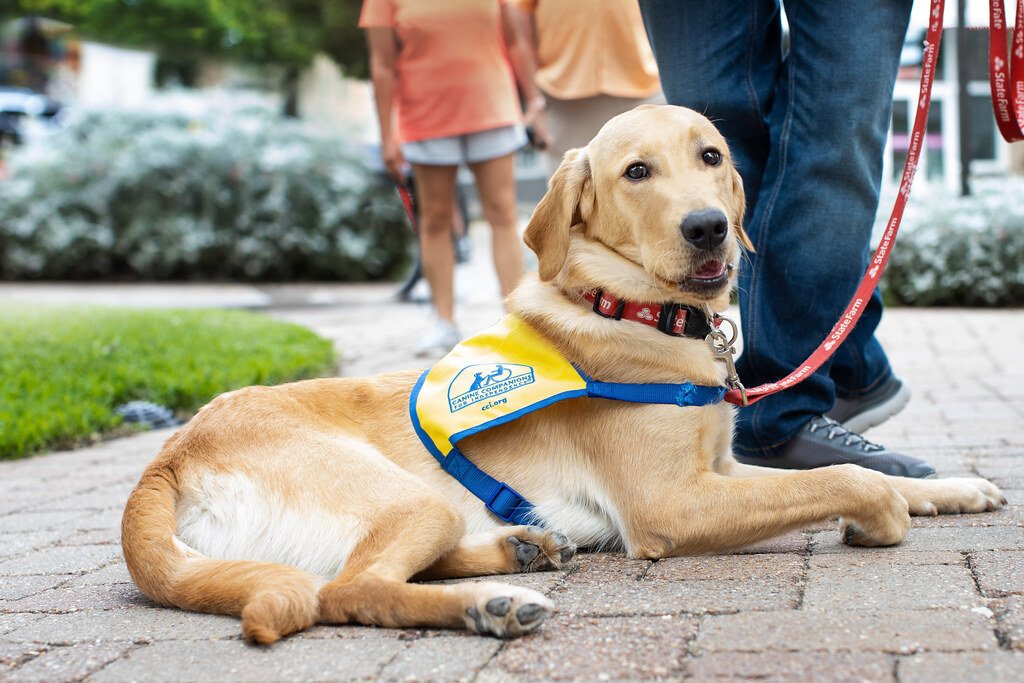Training Special Needs Dogs with Positive Reinforcement: Unleashing their Incredible Potential
With every wag of their tail and affectionate lick, dogs have an uncanny ability to touch our hearts and brighten our lives in unimaginable ways. These faithful companions exude loyalty, love, and loyalty unconditionally, forming unbreakable bonds with their human counterparts. However, for dogs with special needs, their journey toward leading fulfilling lives requires an extra dose of compassion, understanding, and, most importantly, the right training approach. And that approach lies within the transformative power of positive reinforcement.
Table of Contents
- Preparing for Training: Understanding Special Needs Dogs and Their Unique Challenges
- The Power of Positive Reinforcement: Building Trust and Bonding with Special Needs Dogs
- Tailoring Training Techniques: Individualized Approaches for Different Special Needs
- Creating a Supportive Environment: Implementing Structure and Routine for Special Needs Dogs
- Incorporating Specialized Tools and Equipment: Enhancing Training for Special Needs Dogs
- Q&A
- The Way Forward

Preparing for Training: Understanding Special Needs Dogs and Their Unique Challenges
When it comes to training special needs dogs, it’s essential to have a deep understanding of their unique challenges. These extraordinary dogs require a little extra care and patience to ensure their training journey is both effective and enjoyable. Here are a few key points to keep in mind:
- Research Breeds: Different breeds have different temperaments and needs. Before beginning training, research the specific breed of your special needs dog to gain insight into their characteristics and tendencies. This knowledge will help you tailor your training approach accordingly.
- Socialize Gradually: Special needs dogs may have difficulty socializing with other dogs or people. Introduce them to new environments and experiences gradually, ensuring they feel safe and comfortable each step of the way. This gradual socialization will allow them to build confidence and trust at their own pace.
- Use Positive Reinforcement: Special needs dogs respond exceptionally well to positive reinforcement techniques. Reward their good behavior with treats, praise, and affection to motivate them during training sessions. Avoid punishment or harsh methods, as this can lead to distrust and anxiety.
By taking the time to understand and address the unique challenges of special needs dogs, you can create a training plan that is tailored to their specific needs. Patience, consistency, and compassion are key to helping these incredible dogs reach their full potential.

The Power of Positive Reinforcement: Building Trust and Bonding with Special Needs Dogs
Positive reinforcement is a powerful tool when it comes to working with special needs dogs. Through this approach, we can foster trust, build strong bonds, and help these dogs thrive in their everyday lives. By focusing on rewarding desired behaviors rather than punishing unwanted ones, we create a safe and encouraging environment for these furry friends.
One of the key benefits of positive reinforcement is that it allows for effective communication with special needs dogs. By using rewards such as treats, praise, or playtime, we can clearly convey to them what behaviors we appreciate and encourage. This method minimizes confusion and anxiety, helping these dogs to feel more secure and confident. With consistency and patience, we can help them understand what is expected of them, ultimately aiding in their overall well-being.
Positive reinforcement not only helps in building trust and bonding, but it also encourages the development of new skills and positive behaviors. By breaking down desired behaviors into small, achievable steps, we can set these dogs up for success. Whether it’s mastering basic commands, learning to navigate challenging environments, or overcoming certain fears or anxieties, positive reinforcement empowers them to learn and grow. This approach focuses on their strengths and abilities, providing them with the support they need to reach their full potential.

Tailoring Training Techniques: Individualized Approaches for Different Special Needs
Individualized Approaches for Different Special Needs
When it comes to tailoring training techniques for individuals with special needs, a one-size-fits-all approach simply won’t cut it. Each person is unique and requires personalized attention to ensure the most effective learning experience. By understanding and addressing the specific needs of each individual, we can create a training program that promotes growth, development, and success.
1. Assessing Individual Needs: The first step in developing an individualized training approach is to understand the unique needs of the person. This involves conducting assessments and gathering information about their strengths, weaknesses, preferences, and goals. By gaining insight into their abilities and challenges, we can create targeted strategies that cater to their specific requirements.
2. Adapting Teaching Techniques: Once the individual’s needs are identified, it’s crucial to adapt teaching techniques accordingly. This may involve using visual aids, hands-on activities, repetition, or assistive technology to enhance the learning experience. By tailoring the teaching methods to match their individual learning style, we can maximize their understanding and retention of information.
3. Providing Ongoing Support: Lastly, a successful individualized training program should provide ongoing support to facilitate progress and growth. Regular check-ins, adaptive interventions, and modifications to the training plan are essential to address the individual’s evolving needs. By maintaining open communication and continuous evaluation, we can ensure that the tailored approach remains effective and beneficial throughout the journey.

Creating a Supportive Environment: Implementing Structure and Routine for Special Needs Dogs
When it comes to special needs dogs, establishing a structured and routine-based environment can make a world of difference in their overall well-being. Providing them with consistency and predictability can help alleviate anxiety and create a sense of security. Here are some key strategies to implement in order to create a supportive environment for these furry friends:
1. Clear Spaces:
- Ensure your home has designated areas for rest, play, and meals. This visual separation can assist special needs dogs in differentiating activities and understanding their surroundings better.
- Use gates or barriers to restrict access to certain areas if necessary. This can be particularly helpful for dogs with mobility issues or sensory sensitivities, allowing them to navigate the space safely.
2. Structured Daily Routine:
A well-planned routine is essential for establishing structure in a special needs dog’s life. Stick to consistent times for feeding, exercise, bathroom breaks, and any necessary medical treatments. This predictability will give them a sense of control over their day-to-day activities.
3. Visual Cues:
- Use visual cues such as colored tags or bandanas to communicate specific information about your special needs dog.
- For example, a red tag might indicate ”Do Not Approach” while a green one could signify “Friendly and Approachable.”
- These cues can help others understand and respect your dog’s individual needs, promoting a safe and supportive environment.
By implementing structure and routine, you can create a harmonious and supportive environment for special needs dogs, allowing them to thrive and live their best lives.
Incorporating Specialized Tools and Equipment: Enhancing Training for Special Needs Dogs
Incorporating specialized tools and equipment can revolutionize the training experience for special needs dogs, taking their development to a whole new level. These resources, carefully designed to meet their unique requirements, provide invaluable support in addressing diverse challenges effectively.
Here are some ways specialized tools and equipment can enhance training for special needs dogs:
- Adaptive harnesses and support gear: Specialized harnesses and support equipment ensure comfort and safety during training sessions, particularly for dogs with mobility issues. These aids provide additional stability and balance, granting the dogs the freedom to engage in active training without fear of injury.
- Visual and auditory aids: Supplements such as flashing lights, clickers, or vibration collars can be utilized to improve communication and reinforce desired behaviors. These tools allow trainers to create effective signals, promoting clarity and understanding between them and the dog.
- Therapeutic and sensory equipment: Customized tools like balance balls, foam mats, and textured surfaces offer an avenue for sensory stimulation and therapeutic engagement. These materials assist in building strength, coordination, and confidence while providing a fun and enriching experience for the dogs.
By integrating these specialized tools and equipment into training routines, handlers and trainers can optimize their approach, unlocking the full potential of special needs dogs. With patience, adaptability, and these invaluable resources, we can create an inclusive and empowering training environment that nurtures the abilities of every unique canine companion.
Q&A
How can positive reinforcement training benefit special needs dogs?
Positive reinforcement training focuses on rewarding desired behaviors, which can be particularly effective for special needs dogs. It promotes a sense of confidence, builds trust, and encourages a stronger bond between the dog and their owner.
What are some common special needs in dogs that can benefit from positive reinforcement training?
Many dogs with special needs, such as those with physical disabilities, sensory impairments, anxiety, or aggression issues, can benefit from positive reinforcement training. The techniques used allow trainers to work with the dog’s specific challenges and encourage positive behaviors.
Why is patience important when training special needs dogs?
Patience is essential when training special needs dogs as they may require more time and understanding. These dogs often have unique learning styles or communication difficulties, and progress may be slower. Patience allows the trainer to work at the dog’s pace, ensuring a more successful training experience.
What are some specific positive reinforcement techniques for training special needs dogs?
Some effective techniques include using treats or rewards to reinforce desired behaviors, breaking down commands into smaller steps, and using visual or tactile cues to assist dogs with sensory impairments. These techniques help special needs dogs understand what is expected of them and give them clear guidance.
Can positive reinforcement training be used to modify unwanted behaviors in special needs dogs?
Absolutely! Positive reinforcement training is not only effective for teaching commands but also for addressing unwanted behaviors. By redirecting the dog’s focus and rewarding alternative behaviors, trainers can effectively modify unwanted behaviors in a gentle and effective manner.
What are some challenges trainers may face when working with special needs dogs?
Trainers may face challenges such as adapting training techniques to meet the dog’s specific needs, dealing with potential fear or anxiety-based reactions, and finding the most effective way to communicate with the dog. However, with patience, creativity, and a deep understanding of the dog’s needs, these challenges can be overcome.
Is it necessary to work with a professional trainer when training a special needs dog using positive reinforcement?
While it is possible to train a special needs dog using positive reinforcement techniques on your own, working with a professional trainer can be highly beneficial. They have experience working with various special needs dogs and can provide specialized guidance, ensuring both you and your furry companion have the best training experience possible.
The Way Forward
As we conclude this insightful journey into the world of training special needs dogs with positive reinforcement, we are left with a sense of awe and wonder. In a world that often underestimates their potential, these remarkable canines have shown us that with empathy, patience, and a touch of creativity, they can surpass all expectations.
Throughout this article, we have explored the power of positive reinforcement in nurturing the abilities of special needs dogs. We have witnessed the remarkable transformations that occur when these remarkable animals are approached with kindness, compassion, and an unwavering belief in their abilities.
But let us not forget the unsung heroes in this tale – the trainers who devote countless hours to building a bond of trust, understanding, and love with their four-legged companions. They have unlocked the hidden potential within these remarkable creatures, showing us that special needs dogs are capable of achievements that surpass the boundaries we once thought limited them.
With every wagging tail, every joyful leap, and every gentle nudge, these special needs dogs have taught us a valuable lesson in empathy and acceptance. They have shown us that despite their unique challenges, they can thrive and bring immeasurable joy and companionship to our lives.
As we bid farewell to this enlightening journey, let us remember the transformational power of positive reinforcement in training special needs dogs. May we continue to spread awareness, challenge misconceptions, and create a world where these incredible animals are given the love, patience, and opportunities they deserve.
So, let us embrace the path paved with positivity and compassion, as we venture forth on this unforgettable expedition of understanding and appreciation for special needs dogs. Let us celebrate their triumphs, cherishing the unique bond between human and canine, knowing that together, we can create a brighter, more inclusive world for all.
As an affiliate, my content may feature links to products I personally use and recommend. By taking action, like subscribing or making a purchase, you’ll be supporting my work and fueling my taco cravings at the same time. Win-win, right?
Want to read more? Check out our Affiliate Disclosure page.